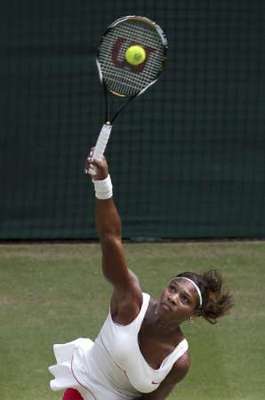 Join the dialogue – for coaches are not of a singular mind when it comes to the serve. Some ask for a massive knee bend and a very high toss. Others for somewhat less legs and a rhythmic delivery that comes from a lower toss.
Join the dialogue – for coaches are not of a singular mind when it comes to the serve. Some ask for a massive knee bend and a very high toss. Others for somewhat less legs and a rhythmic delivery that comes from a lower toss.
Some suggest the the toss well in front, so that the server leaps up and well forward into the court with a very high back leg kick. Other coaches place less emphasis on the toss so far into the court.
Interestingly, as you watch servers of both genders and all stripes – you see many versions of these two “types.”
But in spite of Serena’s early and untimely exit from Wimbledon, her serve is still the model, for the rhythm, simplicity, balance and truly how effortlessly she strikes the ball.
Using side by side videos that could be synchronized to the release of the toss, to the point of contact, or to elements on the follow through – the following screen capture stills (of the video) show significant differences.
Toss Release
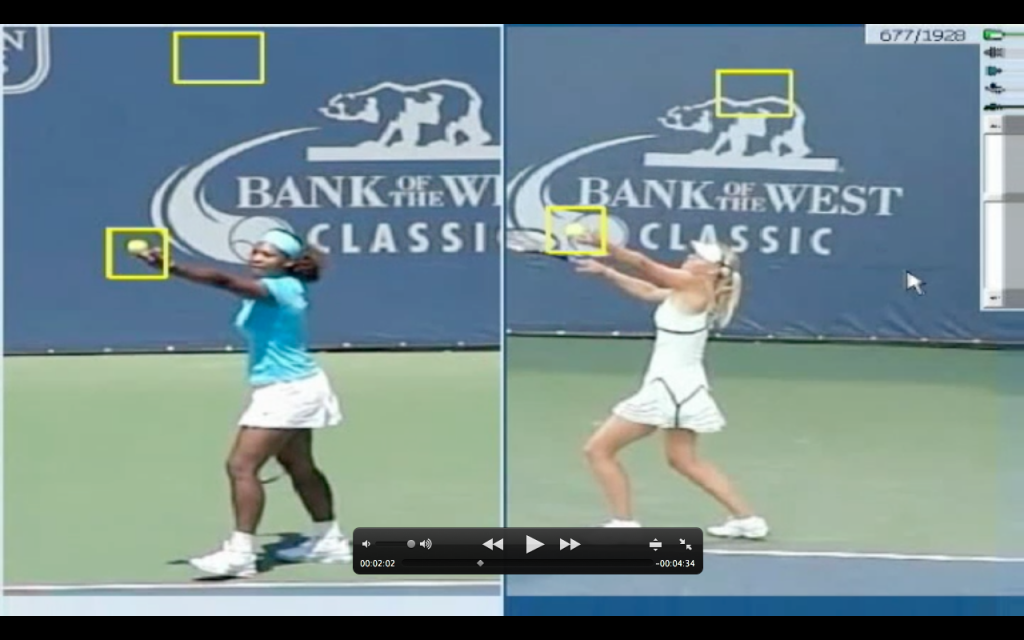
Both have their weight relatively “back”
But of the two Maria already betrays “effort”
After all, this is just a toss!
Impact
Serena is balanced and going up – note the line from her left foot to the racquet
Maria is leaning way left and moving down – again note the line
Leg Kick
Though many coaches train and emphasize this leg kick, I believe it indicates effort (or over-effort)
Do the comparison yourself.
Do any of these problems sound familiar?
- The toss is too high, often way too high, and generally drifts to the left
- The service motion stops with a hitch or pause in the middle of the motion
- The serve appears effortful and muscular – rather than rhythmic and flowing
- The player is unable to create much spin on the second serve
- The shoulder hurts – often connected to an awkward looking kick serve
The solution
- Build a sidespin serve (NOT KICK) using the balance, rhythm and mechanics of a simple and strong overhand throwing motion.
- The basic elements of a loose and rhythmic serve or throwing motion include:
- Keeping the weight back and on the back foot as the motion begins – balance
- Unwinding the hips and shoulders to pull the arm forward – rhythm
- Leading with a bent elbow – this creates sidespin in the service delivery
- Releasing the ball with the arm in a straight line with the shoulders – this position cannot be found at contact in the junior version of the kick serve!!!
- Throwing/serving with a continuous motion – pitchers DO NOT HITCH – means servers must lower the toss
- The Stanford Biomechanical Engineering department studied the services of WTA pro’s at the Bank of the West tournament. The research examined possible causes of shoulder injuries that occur across the women’s (and by extension the junior) circuit.
- The graphs below show considerably more force (stress) to the shoulder from kick serves. Which, for better or worse, appears to be the predominant junior serve model.
Got something to say? (4 comments So Far)
-
Brent G
-
jim
Thanks
-
-
Thank you for a great serve lesson! Even though I am a USPTA teaching pro rated Pro 1 on Individual Lessons, I found the lesson to be helpful.
-
jim
Thanks
-
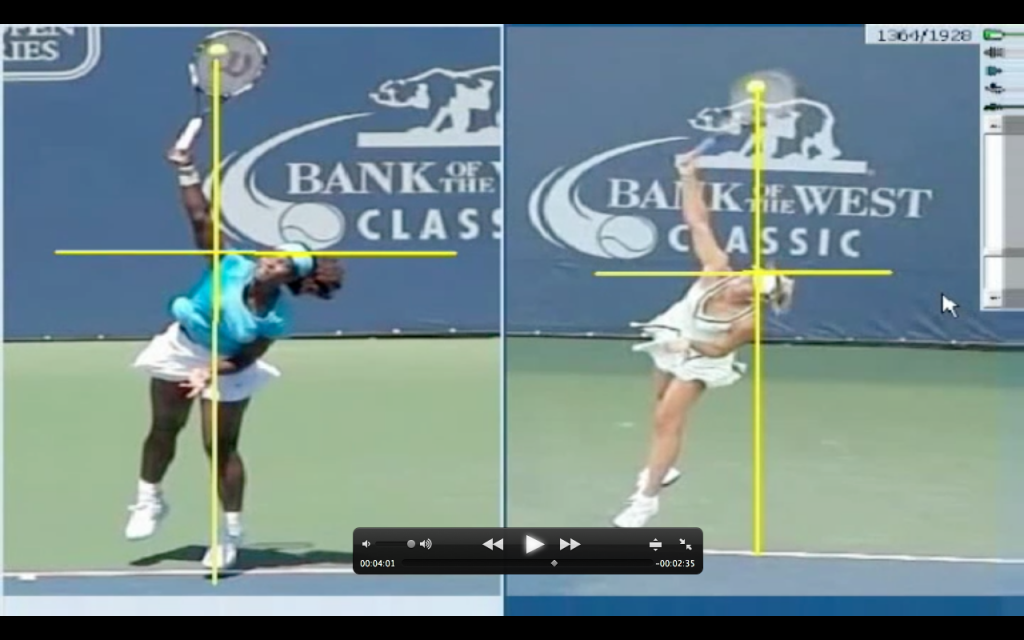
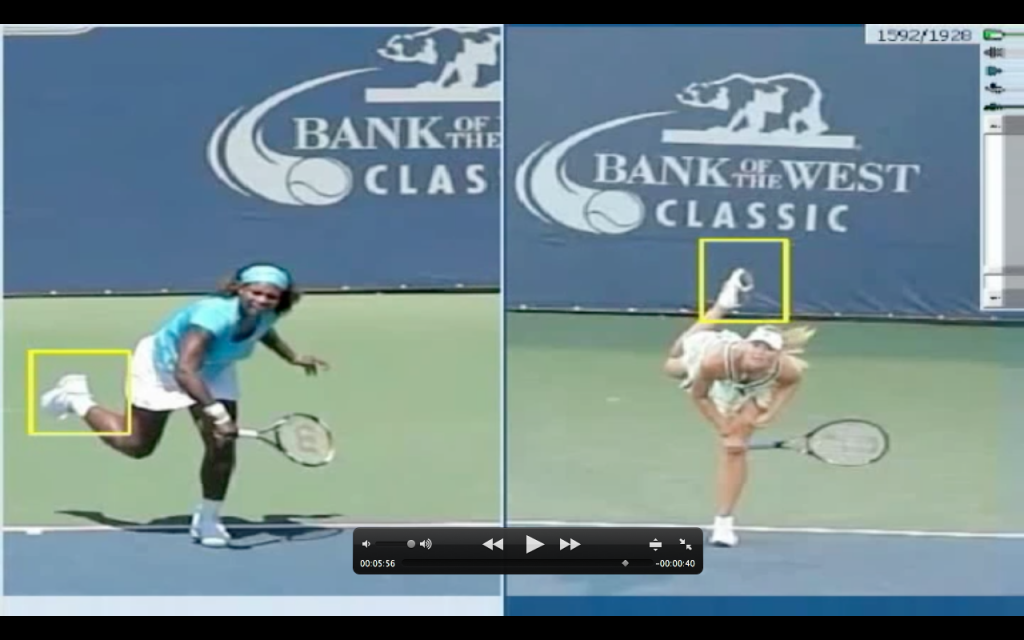
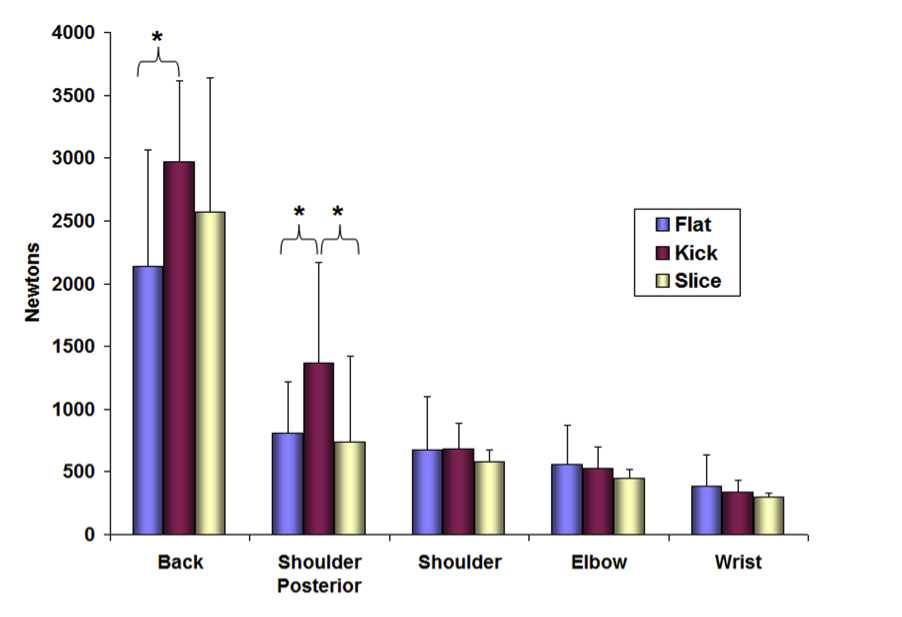
Thank you Jim for an easy, short, extremely knowledgeable lesson on the serve! Your expertise is terrific; wish you were next door for a personal lesson